The modern consumer has spoken, and their message is clear: they want control, convenience, and speed. Across every industry, from retail and hospitality to healthcare and government services, customers are increasingly gravitating toward self-service options that put them in the driver's seat of their experience.
This shift isn't just a trend—it's a fundamental transformation in how people prefer to interact with businesses. Understanding and adapting to this change has become essential for organizations looking to meet customer expectations and remain competitive in today's digital landscape.
The Forces Driving Self-Service Adoption
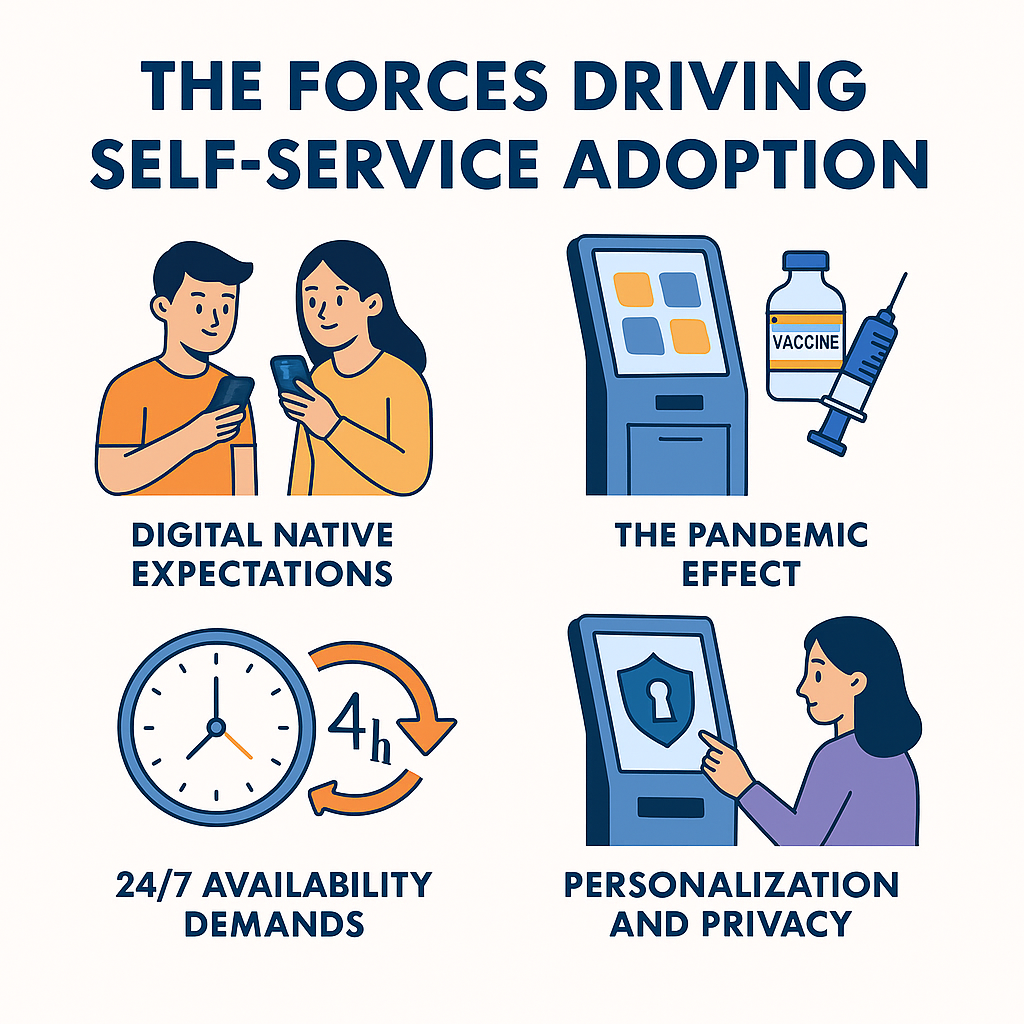 Several converging factors have accelerated the demand for self-service solutions across industries.
Several converging factors have accelerated the demand for self-service solutions across industries.
Digital Native Expectations: Today's consumers, particularly millennials and Gen Z, have grown up with smartphones, apps, and instant access to information. They expect the same level of immediacy and control in their offline interactions that they experience online. For these digital natives, waiting in line for a human representative often feels unnecessary and inefficient.
The Pandemic Effect: COVID-19 dramatically accelerated self-service adoption by making contactless interactions not just convenient, but necessary. What began as a health precaution quickly revealed the efficiency benefits of self-service options. Many customers discovered they preferred the speed and autonomy these solutions provided, creating lasting behavioral changes that persist well beyond pandemic restrictions.
24/7 Availability Demands: Modern life doesn't operate within traditional business hours. Customers want to access services when it's convenient for them—whether that's 6 AM before work or 10 PM after putting the kids to bed. Self-service kiosks and automated systems provide round-the-clock availability that human-staffed operations simply can't match cost-effectively.
Personalization and Privacy: Self-service options often allow customers to take their time, review options thoroughly, and make decisions without feeling rushed or judged. This is particularly valuable in sensitive situations, such as healthcare check-ins or financial transactions, where privacy and discretion are important.
Self-Service Across Industries
The adoption of self-service technologies spans virtually every sector, each finding unique ways to enhance customer experience while improving operational efficiency.
Retail and Quick Service: Grocery stores have embraced self-checkout stations, while fast-food chains use ordering kiosks to reduce wait times and increase order accuracy. These solutions allow customers to browse menus at their own pace, customize orders precisely, and avoid miscommunication that can occur with verbal orders.
Healthcare: Patient check-in kiosks have revolutionized waiting room experiences, allowing patients to verify information, update insurance details, and complete forms digitally. This reduces administrative burden on staff while giving patients more control over their visit preparation.
Hospitality and Travel: Hotels offer self-service check-in kiosks that eliminate front desk queues, while airports deploy numerous self-service options for check-in, baggage tagging, and security document verification. These solutions are particularly valuable in high-volume environments where speed and efficiency are paramount.
Government Services: Municipal offices and DMV locations increasingly rely on self-service kiosks for routine transactions like permit renewals, fee payments, and information requests. This allows government workers to focus on complex cases that require human intervention while providing citizens with faster service for standard requests.
Entertainment and Events: Movie theaters, theme parks, and sports venues use self-service kiosks for ticket purchases, concession orders, and merchandise sales. These systems reduce staffing needs during peak times while eliminating bottlenecks that can negatively impact the customer experience.
The Business Benefits of Self-Service
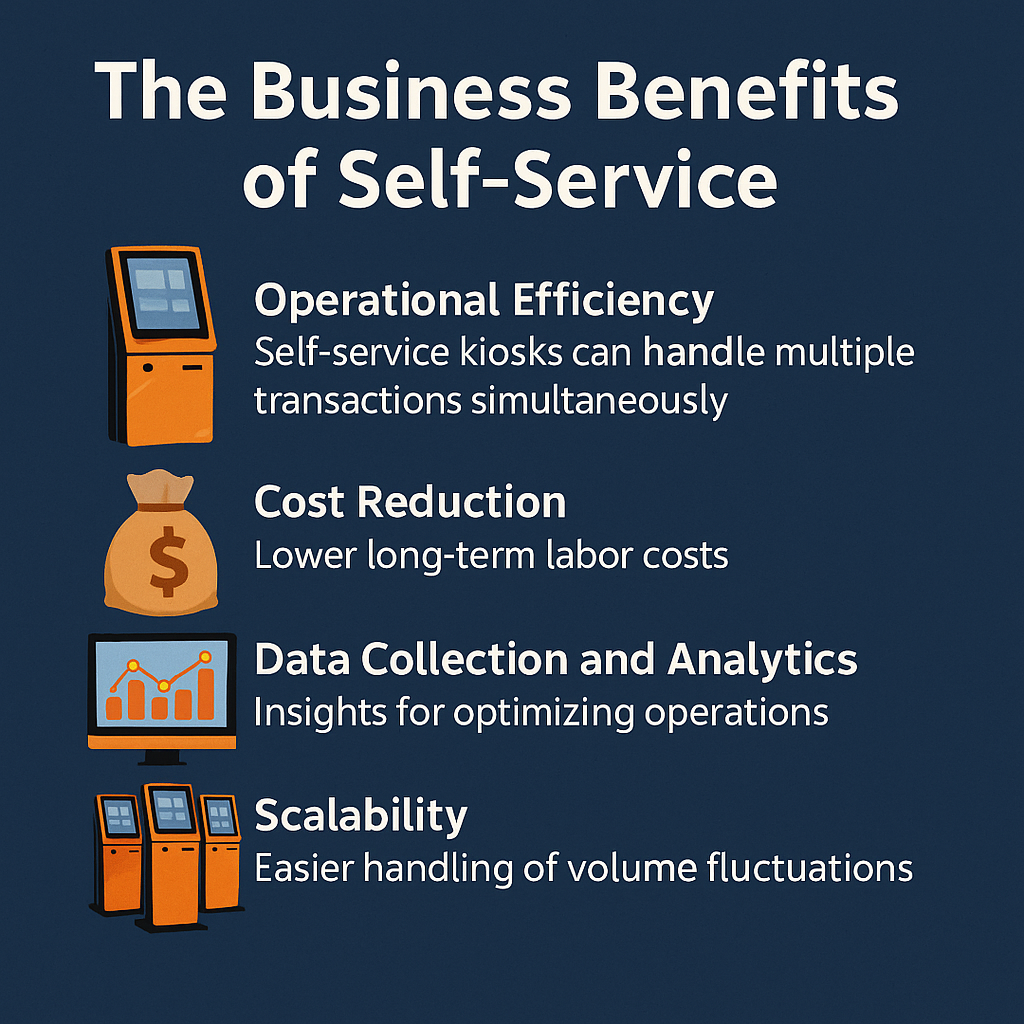 Organizations implementing self-service solutions report significant advantages beyond improved customer satisfaction.
Organizations implementing self-service solutions report significant advantages beyond improved customer satisfaction.
Operational Efficiency: Self-service kiosks can handle multiple transactions simultaneously without breaks, sick days, or varying service speeds. This consistency allows businesses to maintain service levels even during staff shortages or peak demand periods.
Cost Reduction: While the initial investment in self-service technology requires capital, the long-term savings in labor costs can be substantial. Staff can be redeployed to higher-value activities that require human expertise and creativity.
Data Collection and Analytics: Digital self-service interactions generate valuable data about customer preferences, peak usage times, and common service requests. This information enables businesses to optimize operations and make data-driven decisions about service offerings.
Scalability: Self-service solutions can handle volume fluctuations more easily than human-staffed operations. During busy periods, customers can use multiple kiosks simultaneously, while slower periods don't result in idle labor costs.
Overcoming Implementation Challenges
Despite the clear benefits, organizations must navigate several challenges when implementing self-service solutions.
User Experience Design: The interface must be intuitive enough for users of all ages and technical abilities. Poor design can create frustration and drive customers away from self-service options entirely. Successful implementations prioritize simplicity, clear navigation, and accessibility features.
Technology Integration: Self-service kiosks must integrate seamlessly with existing systems, from payment processors to inventory management and customer databases. This requires careful planning and often custom development to ensure smooth operation.
Maintenance and Support: Self-service systems require ongoing maintenance, software updates, and technical support. Organizations must plan for these operational requirements and have protocols in place for handling system outages or malfunctions.
Staff Training and Change Management: Employees need training on how to assist customers with self-service options and when to intervene. Managing the transition requires clear communication about how self-service enhances rather than replaces human jobs.
The Future of Self-Service
As technology continues to evolve, self-service solutions are becoming more sophisticated and capable of handling increasingly complex interactions.
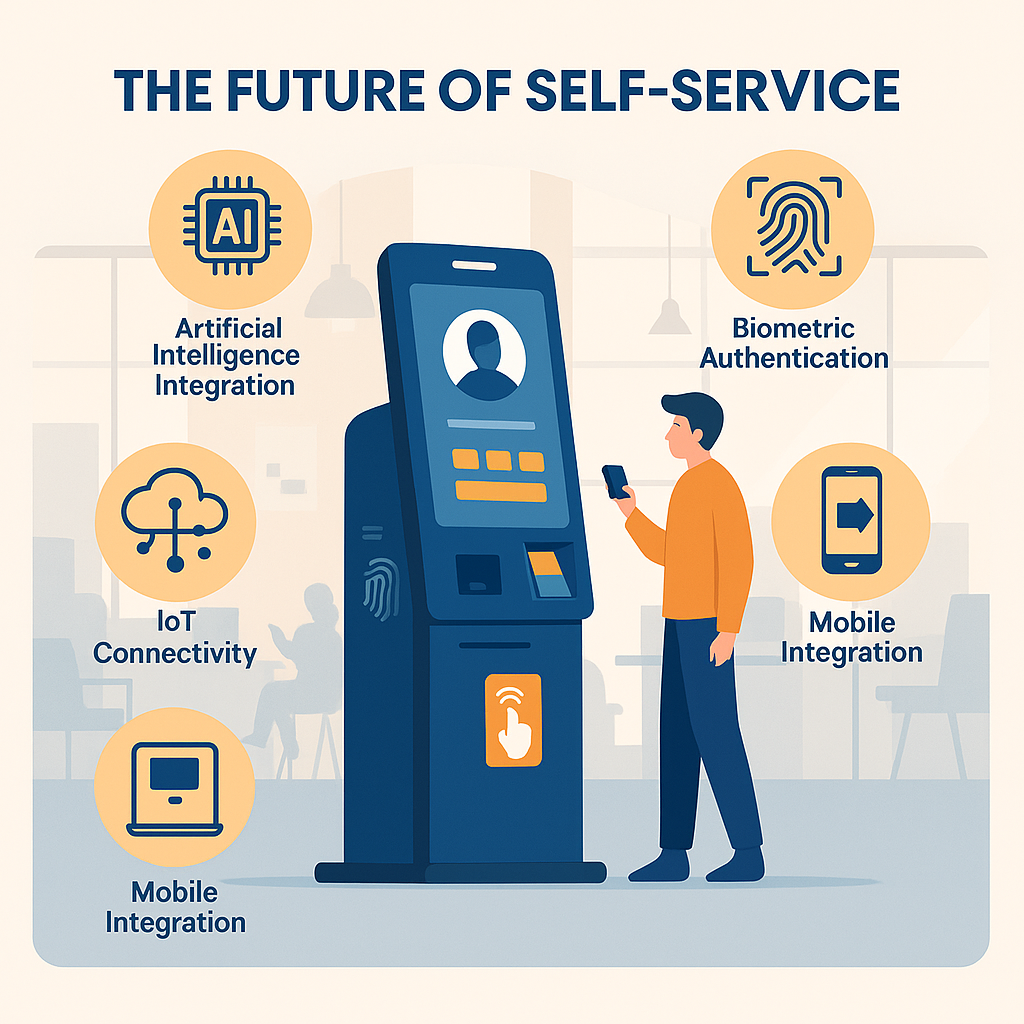 Artificial Intelligence Integration: AI-powered kiosks can provide more personalized recommendations, understand natural language queries, and learn from customer interactions to improve over time. This makes self-service options more helpful and engaging.
Artificial Intelligence Integration: AI-powered kiosks can provide more personalized recommendations, understand natural language queries, and learn from customer interactions to improve over time. This makes self-service options more helpful and engaging.
Biometric Authentication: Fingerprint scanners, facial recognition, and other biometric technologies are making self-service more secure while eliminating the need for cards, codes, or passwords.
IoT Connectivity: Internet of Things integration allows self-service kiosks to communicate with other systems and devices, enabling more comprehensive service offerings and better inventory management.
Mobile Integration: Customers increasingly expect to start transactions on their mobile devices and complete them at kiosks, or vice versa. This omnichannel approach provides maximum flexibility and convenience.
Meeting Customer Expectations
The rise of self-service reflects a broader shift in customer expectations around control, convenience, and efficiency. Businesses that recognize and adapt to this trend position themselves to deliver the experiences modern consumers demand.
However, successful self-service implementation isn't about replacing human interaction entirely—it's about providing customers with choices and using technology to enhance rather than diminish the overall service experience. The most effective approaches combine efficient self-service options with available human support when needed.
Organizations that embrace self-service solutions thoughtfully, with careful attention to user experience and integration with existing operations, will find themselves better equipped to meet evolving customer expectations while building more efficient and resilient business operations.
In our increasingly digital world, self-service isn't just an option—it's becoming an expectation. The businesses that thrive will be those that recognize this shift and implement solutions that truly serve their customers' desire for autonomy, speed, and convenience.
The definition of what makes a valuable customer interaction is expanding. While speed and efficiency remain important, a purely transactional encounter often misses the opportunity to build loyalty or leave a lasting positive impression. Businesses are increasingly seeking ways to make every touchpoint more meaningful, and the once-humble digital kiosk is emerging as a surprisingly powerful ally in this endeavor. No longer confined to simple order-taking or information retrieval, modern interactive kiosks are evolving into dynamic platforms designed to create richer, more engaging customer experiences.
At REDYREF, we've seen firsthand how this evolution can reshape customer perception and interaction. We believe the true strength of today’s kiosk technology lies in its capacity to move beyond the transaction, fostering genuine engagement and building stronger connections.
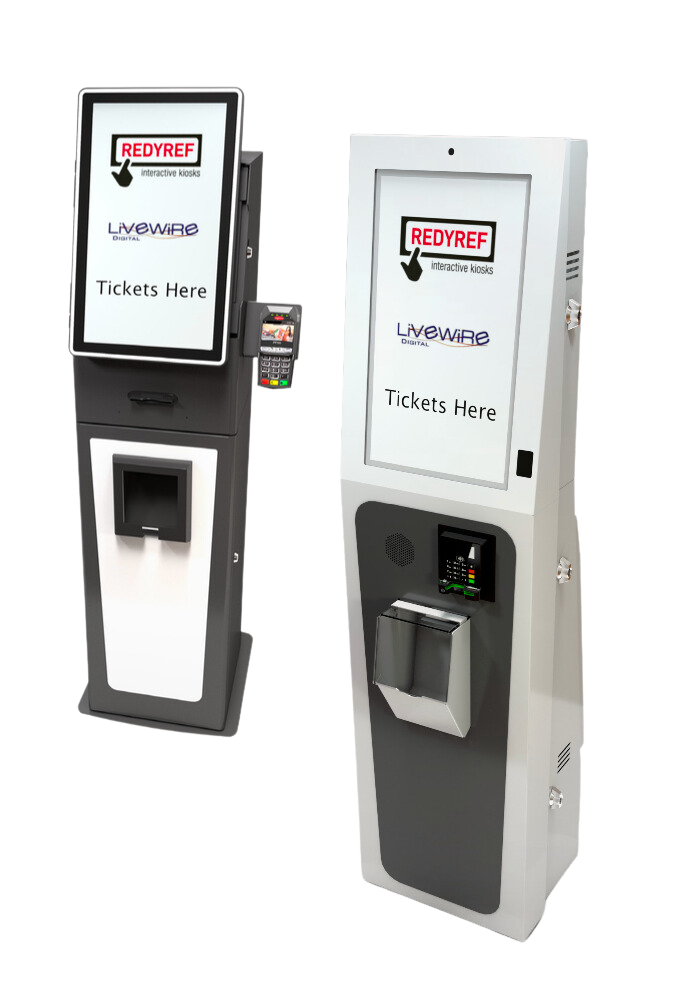
Crafting Experiences, Not Just Processing Orders
Modern interactive kiosks are versatile platforms capable of transforming how customers connect with a brand, access information, and navigate services. Here’s how they are making a difference:
- Personalized Journeys: Interactive kiosks can offer tailored experiences based on user input or loyalty program data. Imagine a retail kiosk suggesting outfits based on a customer's style quiz, or a hospitality kiosk remembering a guest's preferences for a quicker, more personalized check-in. This level of personalization makes customers feel understood and valued.
- Immersive Information and Discovery: Instead of static displays, kiosks can provide dynamic, rich content. Customers can explore product features in 3D, watch how-to videos, compare options side-by-side, or take virtual tours. In a complex environment like a large venue or campus, interactive wayfinding kiosks don’t just show a map; they guide users with intuitive, step-by-step directions and highlight points of interest, turning potential frustration into a seamless discovery process.
- Empowering Customers with Control and Convenience: Well-designed kiosks empower users by giving them control over their experience. Whether it's customizing an order at a restaurant, managing appointments, accessing account information, or self-service ticketing, customers appreciate the autonomy and efficiency. This isn't just about speed; it's about providing a convenient, user-friendly interface that makes their lives easier.
- Building Brand Connection and Storytelling: Kiosks offer a unique channel to reinforce brand identity and share your story. Through customized interfaces, engaging visuals, and interactive brand-related content, businesses can create a more profound connection with their audience. A museum kiosk can offer deeper dives into exhibits, or a corporate lobby kiosk can showcase company values and achievements, making the brand more tangible and relatable.
- Gathering Valuable Insights (Ethically): While providing engaging experiences, interactive kiosks can also gather valuable (and anonymous, if preferred) data on customer preferences, common queries, and interaction patterns. These insights can be instrumental in further refining services, optimizing offerings, and continuously improving the overall customer journey.
- Reducing Friction and Enhancing Staff Effectiveness: By handling routine inquiries or transactions, interactive kiosks can free up staff to focus on more complex, high-value customer interactions. This doesn’t replace the human element but enhances it, allowing employees to provide more specialized support where it’s needed most, leading to greater overall customer satisfaction.
The Future of Engagement is Interactive
The shift towards experiential customer engagement is undeniable. Interactive kiosks are at the forefront of this transformation, offering businesses innovative ways to captivate audiences, provide exceptional service, and build stronger brand affinity. It’s no longer about just getting through a transaction; it's about making every interaction an opportunity to impress, inform, and engage.
At REDYREF, we’re passionate about designing and manufacturing interactive kiosk solutions that help businesses unlock these experiential possibilities. We believe that with the right approach, a kiosk can be one of your most powerful tools for building lasting customer relationships.
A Step-by-Step Guide to Developing a Kiosk Plan That Works
Self-service kiosks are everywhere, and for good reason. They can streamline operations, improve customer experience, and boost your bottom line. But simply buying a digital kiosk and hoping for the best is a recipe for disappointment. A successful kiosk deployment requires a strategic, needs-based approach. You must define why you need one and what you want it to achieve before you start looking at hardware and software. This article will guide you through that crucial planning process, ensuring you make informed decisions that align with your business goals.

Step 1: Understand Your Target Audience
Before you even think about touchscreens or payment processors, think about your customers (or users, if the kiosk is for internal use, like employee time clocks or inventory management). Who are they? What are their needs and expectations? What are their tech-savviness levels?
- Demographics: Consider age, income, education, and other relevant demographic factors. A self-service kiosk designed for tech-savvy millennials might be overwhelming for senior citizens.
- Tech Literacy: How comfortable are your users with technology in general? A complex interface might be fine for some, but a major barrier for others.
- Needs and Pain Points: What problems are you trying to solve for your users? Are they looking for speed, convenience, information, or something else?
- Accessibility: Ensure your kiosk strategy is inclusive. Consider users with disabilities, including visual, auditory, motor, and cognitive impairments. ADA compliance is not just a legal requirement; it's good business.
Understanding your audience is the foundation of a successful kiosk strategy. The user experience should be tailored to their needs, not your assumptions.
Step 2: Define Your Core Business Goals
What do you want your self-service kiosk to achieve for your business? Be specific and measurable. Here are some common goals:
- Increase Speed of Service: Reduce wait times and improve throughput, particularly in high-volume environments like quick-service restaurants or event ticketing.
- Boost Sales and Average Transaction Value: Encourage upsells and cross-sells through targeted promotions and product recommendations.
- Gather Customer Data: Collect valuable information for marketing, product development, and customer relationship management (CRM).
- Reduce Labor Costs: Automate tasks that previously required staff intervention, freeing up employees for more complex or customer-facing roles.
- Improve Customer Satisfaction: Provide a more convenient, efficient, and personalized experience.
- Enhance Brand Image: Project a modern, tech-forward image and reinforce brand messaging.
- Improve Operational Efficiency: Streamline various internal operations.
Your specific goals will dictate many of your technology choices. For example, a digital kiosk focused on data collection might require sophisticated analytics software, while one primarily aimed at speed might prioritize a streamlined, minimalist interface.

Step 3: Assess Your Existing Systems and Infrastructure
Your kiosks won't operate in a vacuum. They need to integrate seamlessly with your existing technology ecosystem. Consider the following:
- Point of Sale (POS) System: Will the kiosk need to process payments? If so, it must be compatible with your POS system to ensure accurate transaction processing and inventory management.
- Customer Relationship Management (CRM) System: If you're collecting customer data, how will that data be integrated into your CRM?
- Network Infrastructure: Do you have sufficient network bandwidth and security to support the kiosks? Will they be wired or wireless?
- Inventory Management System: If the kiosk involves selling items, you need real-time inventory synching.
- Other backend systems: Consider the need for integration with loyalty programs, kitchen display systems (in QSRs), appointment scheduling software, and other relevant platforms.
Failing to consider system integration can lead to data silos, operational inefficiencies, and a frustrating user experience.
Step 4: Evaluate Your Physical Space
Where will the kiosks be located? The physical environment plays a significant role in self-service kiosk design and placement.
- Available Space: How much space do you have? Will the kiosks be freestanding, wall-mounted, or countertop?
- Traffic Flow: Where will customers naturally congregate? Place kiosks in high-traffic areas, but avoid creating bottlenecks.
- Accessibility: Ensure the kiosks are accessible to users with disabilities, complying with ADA guidelines.
- Lighting and Aesthetics: Consider the lighting and overall aesthetic of the space. The kiosk should be visually appealing and fit in with the surroundings.
- Power and Connectivity: Ensure adequate power outlets and reliable network connectivity are available at the chosen locations.
- Security: Kiosks, especially when placed outdoors or in less-supervised areas, need to be secured against theft and vandalism.

Step 5: Consider Staffing Implications
While self-service kiosks can automate many tasks, most don't eliminate the need for human interaction entirely.
- Training: Staff will need to be trained on how to use the kiosks, troubleshoot basic issues, and assist customers.
- Maintenance: Who will be responsible for routine maintenance, such as cleaning, restocking supplies (e.g., receipt paper), and addressing minor technical problems?
- Support: How will you handle more complex technical issues? Will you rely on in-house IT staff or an external service provider?
- Staffing Levels: While digital kiosks can reduce labor costs, you may still need staff nearby to assist customers, especially during peak hours or for complex transactions.
Putting It All Together: Developing Your Strategic Plan
Once you've thoroughly assessed your needs, goals, systems, space, and staffing, you can start developing a comprehensive kiosk strategy. This plan should include:
- Specific Kiosk Functionality: Based on your goals, what features and capabilities will the kiosks need?
- Hardware and Software Selection: Choose kiosks and software that meet your functional requirements and integrate with your existing systems.
- Deployment Timeline: Develop a realistic timeline for procurement, installation, testing, and launch.
- Budget: Determine the total cost of ownership, including hardware, software, installation, maintenance, and ongoing support.
- Metrics for Success: How will you measure the effectiveness of your kiosk deployment? Define key performance indicators (KPIs) aligned with your goals (e.g., transaction volume, average order size, customer satisfaction scores).
- Contingency Planning: What will you do if a kiosk goes down? Have a backup plan in place to minimize disruption.
Don't Just Buy a Kiosk, Build a Strategy
Deploying self-service kiosks can be a game-changer for your business, but only if it's done strategically. By taking a needs-based approach and carefully considering all the factors outlined above, you can ensure that your kiosk investment delivers real value and contributes to your long-term success. Don't just buy a box; build a strategy. Companies like REDYREF, with years of experience in the self-service industry, can provide valuable guidance and support throughout this process, helping you navigate the complexities of digital kiosk deployment and maximize your return on investment.
Kiosks can improve efficiency, reduce costs, and create a positive impression of your business for customers. But while kiosk hardware is essential, choosing the right kiosk software is just as important. The software determines functionality, security, and the overall user experience, and making the right choice is a critical step in the deployment of any self-service kiosk project.
So how do you find the best kiosk software for your needs? Whether you’re setting up kiosks for self-check-in, reverse ATM transactions, ticketing, vending, or wayfinding, this guide will help you choose the right solution for your specific project or environment.
1. Define Your Kiosk’s Purpose
Before selecting software, you need to determine what your kiosk will do. The best software solution depends on the use case and industry. Ask yourself:
✅ Will the kiosk process payments?
✅ Does it need to integrate with other systems, such as inventory management or scheduling tools?
✅ Should it support multiple languages or accessibility features?
✅ Will the kiosk be used indoors or outdoors?
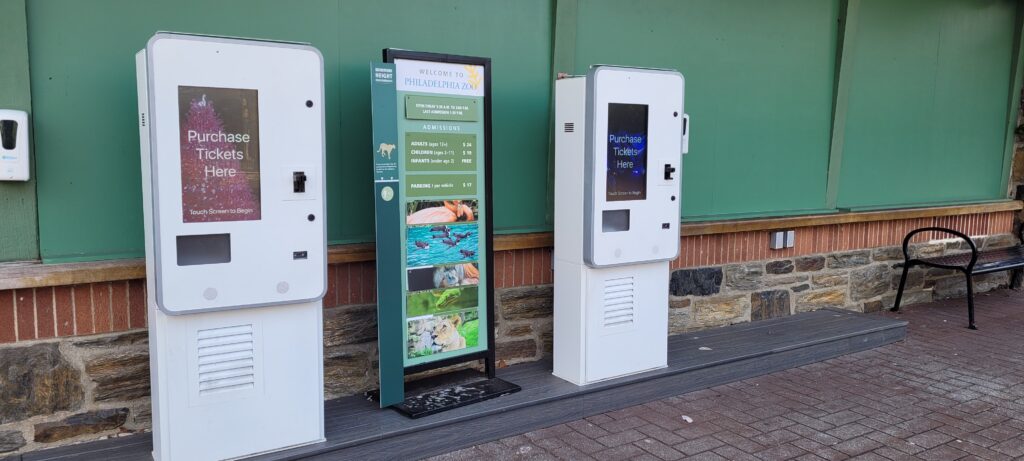
Common Kiosk Applications & Their Software Needs:
•Self-Check-In Kiosks (Hospitals, Hotels, Offices) → Needs appointment integration, ID verification, and a user-friendly interface.
•Retail & Vending Kiosks → Requires secure payment processing, inventory tracking, and real-time updates.
•Wayfinding & Information Kiosks → Should have interactive maps, search functions, and touch-friendly navigation.
•Ticketing Kiosks (Transportation, Events) → Must include ticket printing, barcode scanning, and digital payment options.
•Reverse ATMs / Cash to Card Kiosks → Need bill acceptors and debit card dispensing technology to enable cashless payments.
2. Look for Key Software Features
The right kiosk software should offer essential features that match your business needs while providing a smooth and secure user experience. Here are some must-have features:
User-Friendly Interface
The software should be intuitive, with clear navigation and responsive touchscreen functionality. A confusing interface can frustrate users and reduce engagement.
Remote Management Capabilities
Being able to monitor, update, and troubleshoot kiosks remotely is critical, especially for large deployments. Look for cloud-based solutions that offer real-time system monitoring and software updates.
Security & Compliance
Your kiosk software should protect sensitive user data and comply with industry regulations (e.g., PCI-DSS for payment security or HIPAA for healthcare). Features like data encryption, automatic logouts, and secure authentication are key.
Integration with Third-Party Systems
Kiosks often need to connect with other software platforms—whether it’s a hospital’s patient management system, a retail POS system, or an event ticketing platform. Ensure your software supports API integrations.
Customizability & Branding
Your kiosk should reflect your brand. The best software allows customization of colors, logos, and workflows to create a seamless brand experience.
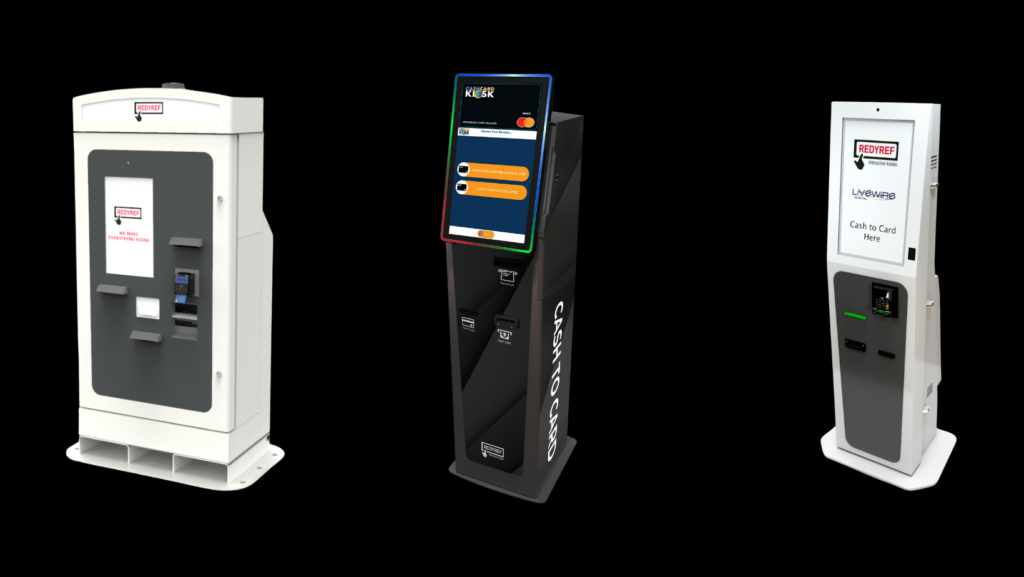
3. Consider the Deployment Environment
Where your kiosk will be placed plays a huge role in selecting software.
Indoor vs. Outdoor – Outdoor kiosks need software that supports weather-resistant hardware and screen brightness adjustments.
High-Traffic vs. Low-Traffic Areas – High-traffic locations require fast, responsive software to prevent bottlenecks.
Standalone vs. Networked Kiosks – If your kiosks need to communicate with one another or share data, cloud-based software with real-time updates is a must.
4. Prioritize Scalability & Future Growth
Think beyond your current needs. Can the software handle additional locations, features, or updates as your business grows? Look for solutions that:
✔ Support multiple kiosk types within the same platform.
✔ Allow easy upgrades without major overhauls.
✔ Offer flexible pricing models (one-time, subscription-based, or per-kiosk licensing).
5. Work with a Trusted Kiosk Software Provider
Choosing the right vendor is just as important as choosing the right software. A reliable provider should:
⭐ Have experience in your industry.
⭐ Offer responsive customer support.
⭐ Provide ongoing updates and security patches.
⭐ Deliver a trial or demo so you can test the software before committing.
At REDYREF, we specialize in custom kiosk solutions that combine cutting-edge software with durable, high-performance hardware. Our expert team helps businesses across industries find the right self-service kiosk software to match their unique needs.
Final Thoughts: Find the Best Kiosk Software for Your Business
The best kiosk software aligns with your goals, enhances user experience, and ensures seamless functionality. By defining your kiosk’s purpose, prioritizing key features, and considering scalability, you can make an informed choice that drives efficiency and engagement.
If you’re ready to find the perfect software for your self-service kiosks, contact REDYREF today to explore our industry-leading kiosk solutions!
Healthcare environments require efficiency, yet patient satisfaction is more important than ever. You're constantly seeking ways to improve workflows, reduce wait times, and enhance the overall patient experience. That's where medical office check-in kiosks are making a real difference. If you're a hospital administrator or practice manager considering self-check-in technology, this post is for you. Let's explore how these innovative solutions can transform your practice.

What are Medical Check-In Kiosks and Why Are They Popular?
Medical check-in kiosks are essentially self-service stations that allow patients to check in for appointments, update their information, and even make payments without needing to interact directly with front desk staff. Think of them as user-friendly ATMs for healthcare. These healthcare kiosks are rapidly gaining popularity because they offer a win-win situation: patients enjoy a faster, more convenient experience, while practices benefit from increased efficiency and reduced administrative burden.
The Benefits of Implementing a Patient Check-In System
Investing in a patient self-check-in system can bring numerous advantages to your practice:
- Reduced Wait Times: This is perhaps the most significant benefit. Kiosks dramatically speed up the check-in process, minimizing those frustrating bottlenecks at the front desk. Shorter wait times lead to happier patients and a more positive perception of your practice.
- Improved Patient Flow: By automating check-in and queuing, hospital kiosks and medical kiosks create a smoother, more organized flow of patients through your facility. This can lead to a more relaxed and efficient atmosphere.
- Increased Efficiency: Self-check-in kiosks free up your front desk staff to focus on more complex tasks, such as handling phone calls, scheduling appointments, and addressing patient concerns. This leads to a more productive use of staff time and resources.
- Enhanced Accuracy: Kiosks reduce the risk of human error when entering patient data. Patients can verify and update their information directly, ensuring accuracy and reducing potential issues down the line. These medical kiosks help create a more streamlined experience.
- Cost Savings: While there's an initial investment, healthcare kiosks can lead to long-term cost savings by optimizing staff utilization and reducing administrative overhead.
- Improved Patient Satisfaction: Patients appreciate the convenience and control that patient kiosks offer. The ability to check in quickly and independently contributes to a more positive overall experience.
- Data Collection and Reporting: Many health care kiosks offer valuable data collection capabilities. You can track patient flow, identify peak times, and gain insights into patient demographics, helping you make informed decisions about staffing and resource allocation.

Choosing the Right Medical Check-In System for Your Practice
When selecting a medical check-in system, consider the following factors:
- Features and Functionality: What specific features do you need? Common features include appointment check-in, insurance verification, co-pay collection, demographic updates, and consent form signing.
- Ease of Use: The system should be intuitive and easy to use for both patients and staff.
- Customization: The ability to customize the kiosk's appearance and workflow to match your practice's branding and needs.
- Security: Robust security measures are non-negotiable.
- Support and Maintenance: Choose a vendor that offers reliable technical support and ongoing maintenance.
- Cost: Compare pricing and consider the long-term return on investment.
REDYREF: Your Partner in Medical Check-In Solutions
At REDYREF, we understand the unique challenges faced by healthcare providers. We're a leading healthcare kiosk manufacturer offering state-of-the-art medical check-in systems designed to streamline your practice and enhance the patient experience. Our kiosks are:
- User-Friendly: Featuring intuitive touchscreens and clear instructions.
- Secure: Security features protect patient data.
- Customizable: Tailored to your practice's specific needs, from functionality to branding.
- Integratabtle: Seamlessly integrate with payment systems
- Reliable: Backed by our expert support team.
The Bottom Line: Invest in Your Practice's Future
Implementing a patient self-check-in system is a smart investment that can transform your practice. By embracing this technology, you can improve efficiency, reduce costs, and enhance patient satisfaction. Ready to learn more about how REDYREF's healthcare kiosks can benefit your practice? Contact us today for a consultation and let's discuss your specific needs. We have experience helping practices of all sizes make the transition to self-check-in technology, and we're confident that we can help you achieve your goals.
The retail landscape is more competitive than ever. Customers are demanding faster service, personalized experiences, and seamless interactions. As a business owner or retailer, you're likely constantly looking for ways to meet these demands, improve efficiency, and ultimately, boost your bottom line. That's where automated retail kiosks come in. They're not just a trend; they're a strategic investment that can transform your business.

Why Automated Kiosks Are the Future of Retail
Think of automated retail kiosks as your hardest-working employees, available 24/7, and always ready to serve. They offer a powerful combination of benefits that directly address the challenges retailers face today:
-
Increased Revenue:
- Faster throughput: Kiosks process transactions quickly, reducing wait times and allowing you to serve more customers, especially during peak hours.
- Upselling and cross-selling: Interactive kiosks can be programmed to suggest complementary products or offer promotions, increasing average transaction value.
- Extended hours: Certain self-service kiosk systems setups can operate outside of regular store hours, capturing additional sales opportunities.
-
Reduced Operational Costs:
- Optimized staffing: Digital kiosks can handle routine tasks like checkout, freeing up your staff to focus on more complex customer interactions and sales activities.
- Lower labor costs: While kiosks require an initial investment, they can significantly reduce long-term labor costs, especially in high-turnover positions.
- Reduced shrinkage: Some kiosk setups can contribute to better inventory control and loss prevention.
-
Enhanced Customer Experience:
- Convenience and speed: Customers appreciate the self-service option, especially for quick purchases.
- Personalized interactions: Kiosks can offer product recommendations, loyalty program integration, and tailored promotions.
- Increased satisfaction: Shorter wait times and a more efficient shopping experience lead to happier customers.
-
Valuable Data and Insights:
- Track customer behavior: Kiosks collect data on purchasing patterns, product preferences, and traffic flow.
- Optimize product placement and promotions: Use data to make informed decisions about inventory, pricing, and marketing strategies.
- Measure ROI: Track kiosk performance and identify areas for improvement to maximize your investment.
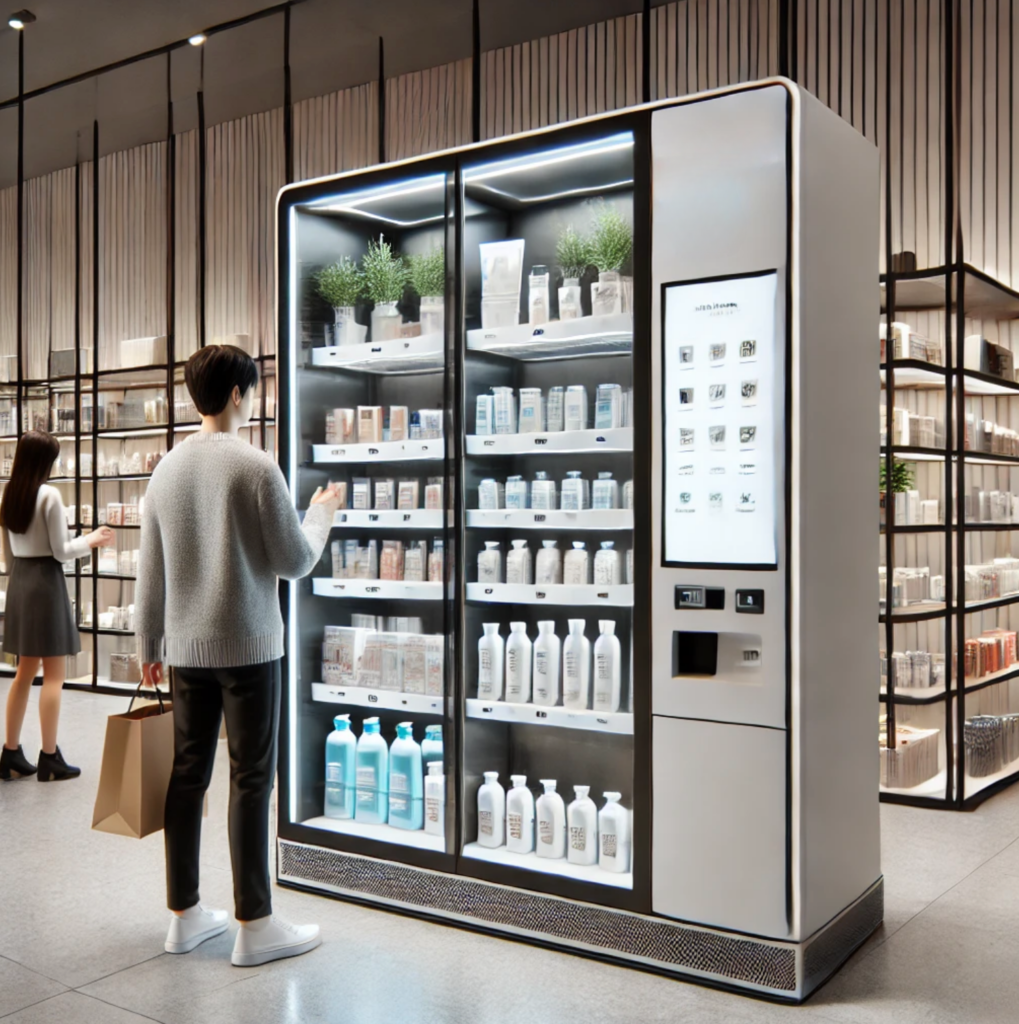
Real-World Success Stories: Kiosks in Action
Major retailers have already embraced kiosks and are reaping the rewards of automated retail:
- McDonald's: Self-ordering kiosks have streamlined their ordering process, reduced wait times, increased order accuracy, and boosted average order values.
- Sephora: Their automated vending machine kiosks provide a unique and engaging customer experience, leading to increased product exploration and sales.
- Airports: Self-service check-in kiosks have become an industry standard, dramatically improving efficiency and passenger flow.
- Home Depot/Lowe's: In-store product information kiosks empower customers with knowledge, leading to more confident purchase decisions.
Choosing the Right Kiosk Solution for Your Business
Selecting the right retail kiosk system depends on your specific needs, industry, and budget. Here are some key factors to consider:
-
Type of Kiosk:
- Self-checkout: Ideal for grocery stores, convenience stores, and other high-volume retail environments.
- Interactive: Perfect for engaging customers with product information, virtual try-ons, and personalized recommendations.
- Wayfinding: Essential for large retail spaces, malls, and department stores.
- Vending: Offers a 24/7 sales channel for a wide range of products, from personal care to small electronics.
- Custom: Tailored solutions designed to meet your unique requirements.
-
Software and Integration:
- Seamless integration: Ensure the kiosk software integrates with your existing POS, inventory management, CRM, and other systems.
- User-friendly interface: Choose a system that is intuitive and easy for both customers and staff to use.
- Data analytics: Select a solution that provides robust data tracking and reporting capabilities.
-
Hardware and Design:
- Durability and reliability: Choose robust hardware built to withstand heavy usage in a retail environment.
- Aesthetics and branding: Select a design that complements your store's aesthetic and reinforces your brand identity.
- Security: Ensure the kiosk has strong security features to protect customer data and prevent fraud.
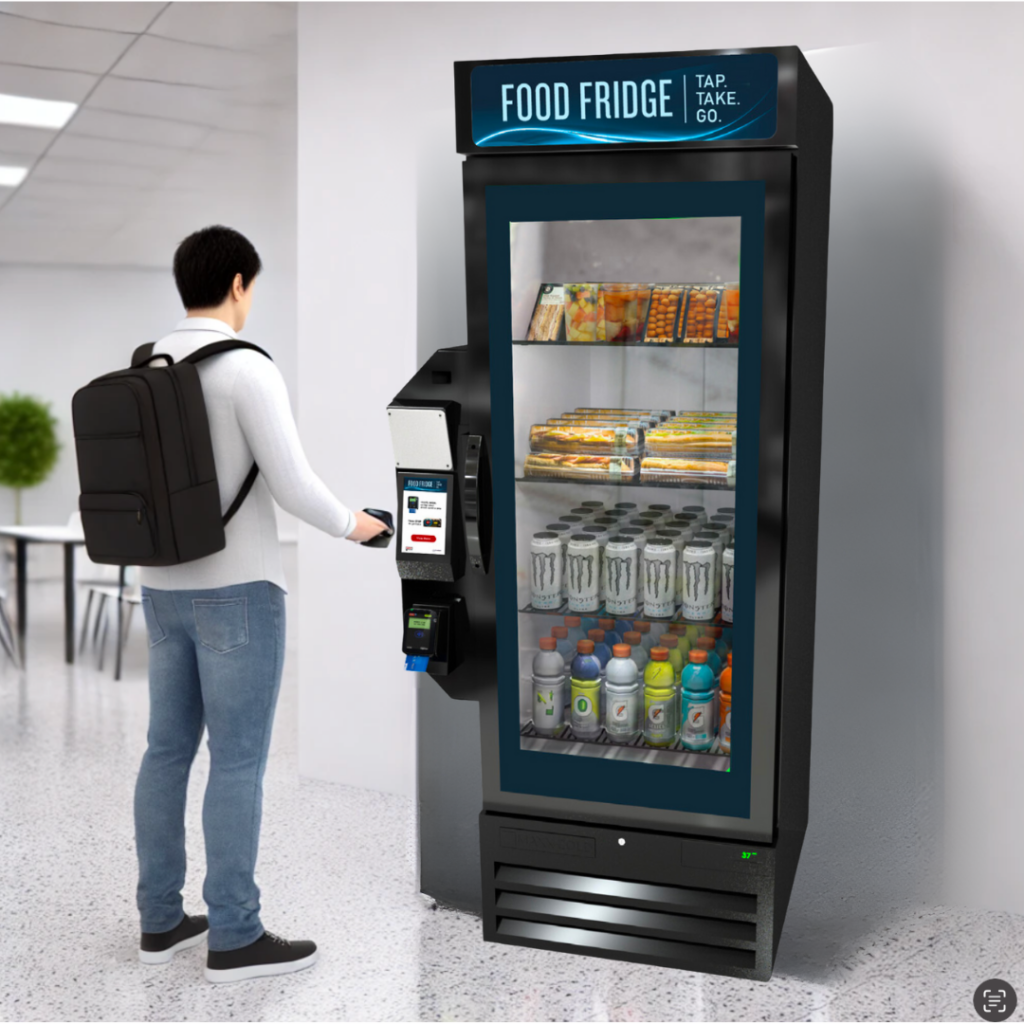
Partnering with the Right Kiosk Vendor: Key Considerations
Choosing a reputable and experienced retail kiosk vendor to manufacture your system is crucial for a successful implementation. Look for a partner who offers:
- Proven expertise: A vendor with a strong track record in designing, manufacturing, and deploying retail kiosks. They should have a deep understanding of retail workflows.
- Customization capabilities: The ability to tailor hardware and software to your specific needs and branding requirements.
- Comprehensive support: Ongoing maintenance, technical support, and software updates to ensure optimal performance.
- Scalability: A solution that can grow and adapt as your business evolves.
The Bottom Line: Retail Kiosks Are an Investment in Future Growth
Investing in retail kiosks is not just about keeping up with the latest technology; it's about strategically positioning your business for future growth and success. By carefully considering your needs and partnering with the right vendor, like REDYREF, you can leverage the power of automated retail to enhance customer experience, streamline operations, and drive profitability. The right kiosk system can be a powerful tool to help you thrive in today's competitive retail landscape.
Vending machines have become more than just a place to grab a quick snack or soda. Thanks to advanced in technology, vending has evolved into a highly efficient, smart solution for businesses across industries. One innovation driving this evolution is RFID. RFID vending machines use Radio Frequency Identification tech to enhance the customer experience, improve operational efficiency, and open doors (literally!) to exciting new possibilities in vending.
What is an RFID Vending Machine?
An RFID vending machine is a type of smart vending machine that uses this technology to track, manage, and dispense products. Unlike traditional vending machines that rely on mechanical or weight-based systems, these vending machines use embedded RFID tags to identify and track products. This technology provides unparalleled accuracy, enabling businesses to manage inventory in real-time while offering customers a seamless, self-service experience.
RFID vending machines, like REDYREF’s Smart Refrigerated Food Fridge, represent the next generation of vending kiosks. They are particularly well-suited for environments where efficiency and precision are essential, such as offices, healthcare facilities, schools, and gyms.
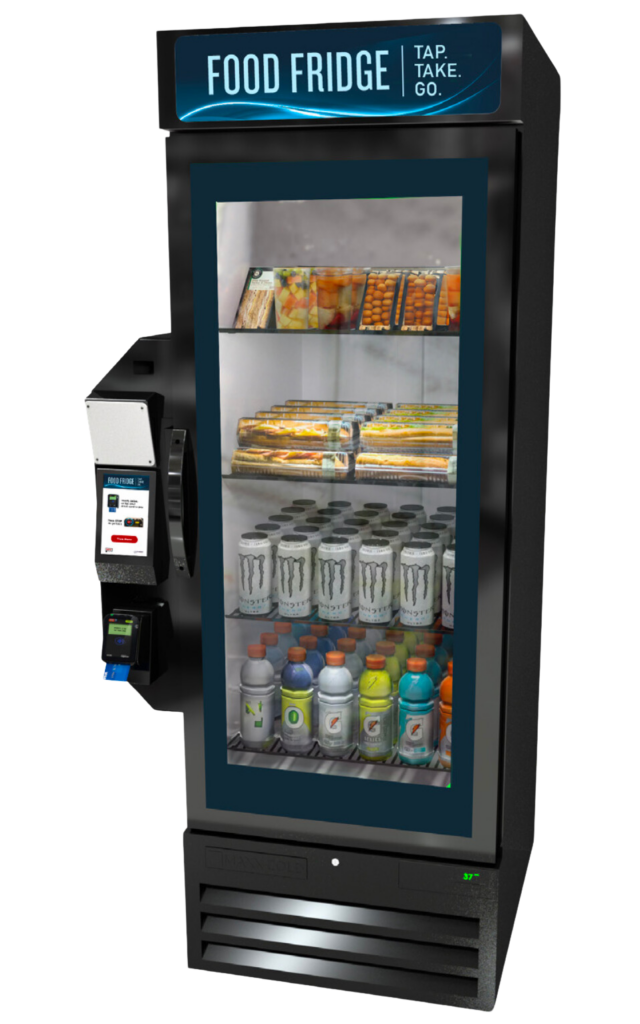
How Do RFID Vending Machines Work?
The magic of RFID vending machines lies in their simplicity for customers and utility for the companies that run them. Here’s how they typically operate:
1.RFID Tagging: Each product in the vending machine is tagged with a small RFID chip. This chip contains important information such as product name, price, and expiration date.
2.User Interaction: Customers interact with the vending kiosk’s touchscreen or mobile app to browse available items.
3.Selection and Payment: Once a product is selected, the machine processes payment through integrated systems that support credit cards, mobile wallets, or other cashless payment methods.
4.Product Retrieval: Customers access their chosen product directly from the vending machine. The RFID system automatically updates inventory in real-time, ensuring accurate stock levels.
5.Inventory Management: The RFID technology tracks every transaction, making it easy for businesses to monitor stock, identify popular products, and restock efficiently.
Benefits of RFID Vending Machines and Kiosks
RFID vending kiosks offer many advantages for both businesses and customers. Here are some key benefits:
1. Improved Customer Experience
•Faster Transactions: Customers enjoy quick and hassle-free transactions, reducing wait times.
•Product Transparency: Customers can view detailed product information, including ingredients and nutritional facts, directly on the vending machine display.
•Convenient Payments: Cashless payment options make purchases more accessible.
2. Enhanced Inventory Management
•Real-Time Tracking: RFID technology provides real-time data on stock levels, reducing the risk of running out of popular items.
•Automated Alerts: Businesses receive alerts when stock is low, allowing for timely restocking and reducing waste.
3. Operational Efficiency
•Reduced Errors: Automated tracking eliminates manual inventory errors, saving time and resources.
•Streamlined Maintenance: Machine health monitoring ensures that issues are identified and resolved quickly.
4. Diverse Applications
RFID vending machines aren’t just for snacks. They’re ideal for dispensing fresh food, personal care products, electronic accessories, and even medical supplies. At REDYREF, we manufacture all of our kiosks and are able to custom-design RFID vending kiosks to fit just about any reasonably-sized item that you'd find at a typical retailer.

Where Can RFID Vending Machines Be Found?
RFID vending machines are versatile and adaptable, making them suitable for a wide range of industries:
•Corporate Offices: Offer employees fresh, healthy food options with a healthy food vending machine that tracks sales and automates restocking.
•Healthcare Facilities: Ensure easy access to essential medical supplies or PPE with a secure, automated food vending machine or supply kiosk.
•Educational Institutions: Provide students with quick access to snacks, beverages, and study essentials.
•Fitness Centers: Offer gym-goers healthy snacks and beverages via a refrigerated vending machine.
•Retail Spaces: Simplify inventory management for high-turnover items like electronics or beauty products.
Why Choose REDYREF for RFID Vending Machines?
At REDYREF, we specialize in creating cutting-edge vending kiosks, including RFID-enabled smart vending machines. Our Smart Food Fridge is a prime example of how RFID technology can revolutionize food and beverage vending. It combines advanced features like real-time inventory tracking, secure payment processing, and energy-efficient design to deliver exceptional value for businesses and customers alike.
When you partner with REDYREF, you’re not just purchasing a kiosk system—you’re gaining a comprehensive solution backed by years of experience and expertise in kiosk design, engineering, and manufacturing.
The Future of Smart Vending
RFID vending machines are more than just a trend—they’re the future of automated retail. By investing in smart vending technology, businesses can provide exceptional customer experiences while streamlining their operations and reducing costs.
Interested in exploring how REDYREF’s RFID vending kiosks can transform your business? Contact us today to learn more about our innovative vending solutions.
Let’s work together to redefine convenience!
Life moves fast, and people need food options that can keep up. Whether at work, school, or on the go, accessing fresh, healthy meals shouldn’t be a challenge. That’s where refrigerated vending machines come in. These innovative smart vending machines are making it easier than ever to grab fresh, nutritious food quickly and easily. With advanced technology like RFID tracking, cashless payments, and real-time inventory updates, they’re changing how businesses serve their customers.
Let’s explore how solutions like REDYREF’s Smart Food Fridge RFID vending kiosk are revolutionizing the way we eat and why they’re a must-have for businesses looking to enhance their customer experience.
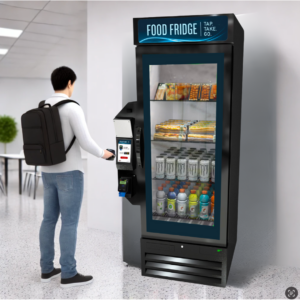
What Is a Refrigerated Vending Machine?
A refrigerator vending machine is more than just a traditional snack dispenser. It’s an automated food vending kiosk designed to store and dispense fresh, perishable items like salads, sandwiches, yogurt, and drinks. These machines use advanced cooling technology to maintain food quality, paired with smart features like digital displays and RFID payment systems to make transactions quick and easy.
Why Fresh Food Vending Machines Are the Future
People are increasingly looking for healthier, more convenient food options. Traditional vending machines filled with chips and candy don’t meet the needs of today’s wellness-focused consumers. Healthy food vending machines step in to provide a better alternative, offering fresh meals and snacks whenever and wherever they’re needed.
Benefits of Fresh Food Vending Machines:
1.Convenience Around the Clock: Access meals and snacks 24/7, perfect for busy workplaces, schools, and public spaces.
2.Healthier Choices: Support wellness by offering nutritious options to employees, students, and visitors.
3.Frictionless Transactions: Cashless payment systems, including RFID and mobile wallets, make buying quick and easy.
4.Operational Efficiency: With real-time inventory tracking, restocking is simple, and you’ll never run out of customer favorites.
What Makes REDYREF’s Smart Food Fridge Stand Out?
The Smart Food Fridge isn’t just another vending kiosk—it’s a game-changer for businesses that want to provide fresh, high-quality food without the need for a full-service cafeteria. Here’s what makes it special:
1. RFID-Enabled Convenience
Using RFID tags, the Smart Food Fridge ensures seamless, cashless transactions. Customers simply grab what they need, scan their items, and go. The technology also tracks inventory, letting you know what needs restocking in real time.
2. Advanced Refrigeration
Maintaining the perfect temperature is critical for food safety. This refrigerated vending machine keeps meals fresh and ready to eat while meeting strict food safety standards.
3. Custom Branding Options
Businesses can personalize their vending kiosks with branded wraps or powder-coated finishes, making the fridge not just a functional asset but a cohesive part of their branding strategy.
4. Interactive Features
An intuitive touchscreen display offers customers an easy way to browse menu items, read nutritional info, and complete transactions, all while enhancing the user experience.
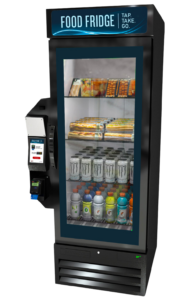
Where Can Refrigerated Vending Machines Be Used?
The versatility of fresh food vending machines makes them a great fit for almost any environment. Here are just a few examples:
•Corporate Offices: Provide employees with healthy meals on-site to improve productivity and satisfaction.
•Gyms and Fitness Centers: Stock protein-packed snacks and hydrating beverages for members on the go.
•Hospitals and Clinics: Offer nutritious, convenient options to healthcare staff and visitors during long shifts.
•Schools and Universities: Keep students fueled with balanced meals and snacks between classes.
•Transportation Hubs: Improve the travel experience with grab-and-go food options in airports and train stations.
Why Refrigerated Vending Machines Are a Smart Investment
As technology continues to evolve, RFID vending machines like our Smart Food Fridge will only become increasingly innovative. AI-driven recommendations, enhanced payment systems, and expanded customization options are just the beginning. For businesses, these advancements mean more opportunities to meet customer needs while streamlining operations.
For businesses aiming to deliver fresh, convenient food options, refrigerated vending machines are an obvious choice. They enhance the customer experience, promote healthy choices, and even open up new revenue streams. Our refrigerated vending system takes it a step further with cutting-edge technology and customizable features designed to make vending as efficient and user-friendly as possible.
Ready to bring the future of vending to your business? Contact us today to learn more about how the Smart Food Fridge can transform your workplace, gym, or campus into a hub of fresh, healthy convenience.
Self service kiosk machines have dramatically altered how businesses interact with customers, offering new levels of convenience and efficiency. But like any technology, they need the right care and management to function their best. That’s where effective control procedures become critical to a kiosk program's success. These steps ensure your digital kiosks stay secure, perform well, and provide a top-notch experience for users.
Here’s a closer look at what these procedures involve and how they can make a real difference for your business.
What Are Kiosk Machine Control Procedures?
Think of control procedures as a set of best practices for keeping your kiosks in tip-top shape. They include everything from software updates and hardware checks to data security and user access management. The goal? To make sure your kiosks run smoothly, stay secure, and deliver a great experience for every customer.
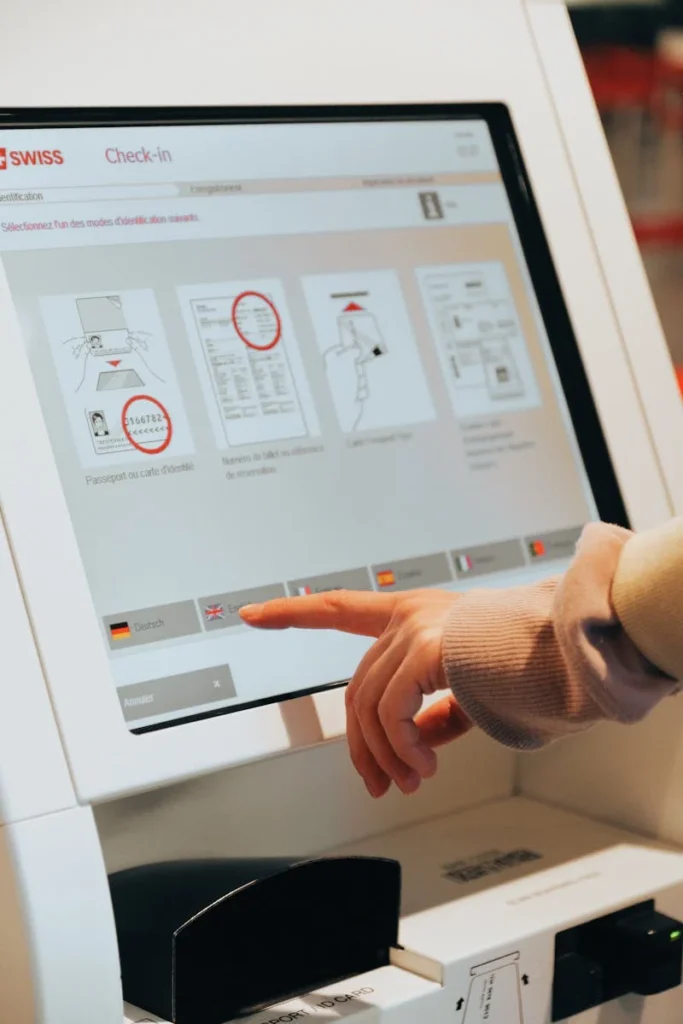
Key Steps to Keep Your Self Service Kiosks in Check
1. Stay on Top of Kiosk Software Updates
Nobody likes outdated software, and your kiosk software is no exception. Regular updates not only improve performance but also patch up any vulnerabilities. Set them to update automatically so you’re always ahead of the game.
2. Don’t Skimp on Hardware Maintenance
From interactive touchscreens to printers, every part of your kiosk needs a little TLC. Regularly clean, inspect, and test components to catch issues before they become big problems. This keeps everything running smoothly and minimizes downtime.
3. Secure User Access
Only the right people should have access to your kiosk systems. Use tools like multi-factor authentication (MFA) and set permissions based on roles that allow your kiosks to stay locked down to the general public. This protects your kiosks from accidental or intentional misuse.
4. Prioritize Data Security
Your customers trust you with their information, so make sure it’s safe. Encrypt all transactions and comply with industry regulations like PCI DSS for payments or HIPAA for healthcare. Keeping data secure builds trust and loyalty.
5. Monitor Performance in Real-Time
Don’t wait for something to break. Use remote monitoring tools to keep an eye on how your kiosks are performing. Set up alerts to get notified of any issues, so you can fix them before they affect customers.
6. Make the Interface (UI) Easy to Use
A confusing interface is a deal-breaker. Regularly review your kiosk’s user interface to ensure it’s intuitive and user-friendly. Test it out with real users to identify any hiccups and make adjustments as needed.
7. Protect the Physical Machine and its Enclosure
Whether it’s preventing tampering or braving the elements, kiosks need to be durable. Invest in enclosures made from tough materials like stainless steel and ensure they’re designed for the environment—indoor or outdoor.
8. Plan for Backups and Recovery
Things happen—power outages, crashes, you name it. Having a solid backup and recovery plan ensures your kiosks can bounce back quickly, minimizing disruptions.
9. Stay Compliant
Compliance isn’t just about checking a box; it’s about ensuring your kiosks meet industry standards and accessibility guidelines. From ADA compliance for accessibility to certifications for secure transactions, staying compliant is non-negotiable.

Why These Procedures Matter
When you implement control procedures, you’re not just protecting your digital kiosk investment—you’re also delivering a better experience for your customers. The benefits include:
•More Uptime: Less downtime means happier customers.
•Improved Security: Safeguarding customer data keeps everyone’s trust intact.
•Smarter Operations: Monitoring and regular maintenance streamline processes.
•Better User Experience (UX): Intuitive interfaces and reliable performance win customers over.
How REDYREF Makes It Easy
At REDYREF, we’re here to help you take the guesswork out of kiosk management. Our kiosks are designed with these control procedures in mind, offering features like:
•Built-In Remote Monitoring: Stay ahead of issues with real-time performance tracking.
•Secure, Rugged Designs: Our enclosures are tamper-proof and built to last.
•User-Friendly Software: We focus on simplicity and reliability to keep customers coming back.
•Full Support Services: From setup to maintenance, we’re with you every step of the way.
The Bottom Line
Effective control procedures for digital kiosks are the secret sauce for keeping your machines running like clockwork. By staying proactive with updates, maintenance, and security, you can deliver an experience that keeps customers coming back. Whether you’re in retail, healthcare, or transportation, the right strategy will help your kiosks—and your business—shine.
Want to learn more about how REDYREF can support your kiosk journey? Reach out today to get started!
Customers have come to expect more than just convenience from the businesses they engage with—they’re looking for personalized experiences and rewards that make them feel valued. Loyalty programs have always been a great way to keep customers coming back, and when combined with cashless payment systems like cash to card kiosks and reverse ATMs, they become even more powerful. This integration isn’t just about rewarding customers; it’s about creating seamless, engaging experiences that drive repeat business and enhance satisfaction.
So how can businesses bring these two tools together effectively? Let’s take a look!
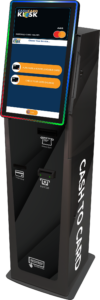
Why Pair Loyalty Programs with Cashless Payment Systems?
Loyalty programs and cashless payment systems are each effective on their own, but together they deliver a whole new level of customer engagement. Here’s why integrating them makes so much sense:
1.Simplifies Transactions: Customers can earn and redeem rewards automatically when making cashless payments—no need for extra apps or punch cards.
2.Encourages Repeat Business: A seamless loyalty experience keeps customers returning, especially when perks are tied to cashless transactions.
3.Generates Valuable Data: Cashless systems track customer purchases, providing insights that help businesses create more personalized offers and rewards.
How Businesses Can Integrate Loyalty Programs with Cashless Payments
Integrating a loyalty program with cash-to-card kiosks or reverse ATMs is easier than you might think. Here’s how businesses can start making the connection:
1. Link Loyalty Accounts to Prepaid Cards
Imagine customers loading cash onto a prepaid card via a reverse ATM, and every dollar spent automatically earning them points in your loyalty program. It’s a simple yet effective way to encourage participation while making spending more rewarding.
2. Offer Exclusive Perks for Cashless Users
Give customers a reason to adopt your cashless system by tying it to exclusive benefits, like:
•Double Rewards: Earn bonus points when using a loyalty-linked prepaid card.
•Special Discounts: Offer lower prices or limited-time deals for cashless purchases.
•Priority Access: Reward loyalty members with early access to sales, events, or new products.
3. Integrate with Mobile Apps
Many businesses already use mobile apps for their loyalty programs. Why not take it a step further? Allow customers to:
•Reload prepaid cards directly from the app.
•Track points and rewards in real-time.
•Receive personalized offers based on their spending habits.
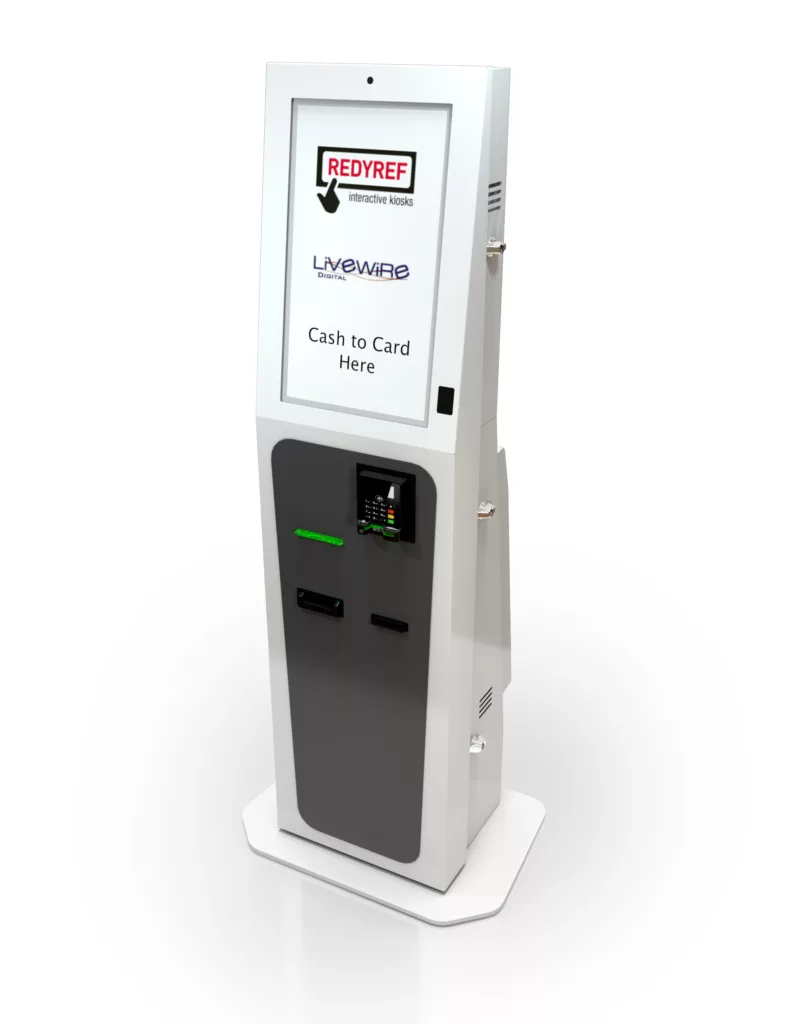
Real-World Opportunities
Businesses across many industries can find success by integrating loyalty programs with cashless payment solutions.
•Sports Arenas: Fans at a stadium can earn points on every purchase made with a prepaid card issued through a reverse ATM. Points can be redeemed for team merchandise or future game tickets.
•Quick-Service Restaurants: A QSR or fast-casual chain can use cash-to-card kiosks to simplify payments, and customers earn free meals after reaching certain spending milestones.
•Retail Stores: Shoppers using branded prepaid cards linked to a loyalty program receive instant cash back on purchases.
The Benefits of Loyalty Integration
For Customers:
•Convenience: No more juggling multiple apps, cards, or accounts.
•Instant Rewards: Points and perks are applied automatically, making the experience frictionless.
•Added Value: Exclusive deals and personalized offers make customers feel appreciated.
For Businesses:
•Higher Revenue: Loyalty programs drive repeat purchases and encourage higher spending.
•Valuable Insights: Data from cashless systems helps tailor promotions and improve customer experiences.
•Stronger Brand Loyalty: Rewarding customers builds trust and keeps them coming back.

Getting Started with Integration
Integrating loyalty programs with cashless payment systems might sound complex, but it’s a straightforward process with the right tools and partners. Here’s how to begin:
1.Find the Right Partner: Work with a provider like REDYREF that specializes in customizable cashless payment solutions.
2.Focus on Simplicity: Make sure the integration is easy for customers to use, from signing up for the program to redeeming rewards.
3.Test and Learn: Start small by piloting the integration in select locations, then use customer feedback to refine and expand.
The Future of Loyalty Programs and Cashless Payments
As more businesses move toward cash-free payments, integrating loyalty programs with tools like cash-to-card kiosks is a natural next step. It creates a win-win situation: customers enjoy a smoother, more rewarding payment experience, while businesses gain repeat customers and valuable data to refine their strategies.
At REDYREF, we’re here to help you take advantage of this powerful combination. Our solutions, including prepaid card kiosks and debit card dispensing machines, make it easy to implement a cashless payment system that works seamlessly with your loyalty program.
Ready to take your customer experience to the next level? Contact REDYREF today and let’s create a loyalty-integrated cashless solution tailored to your business needs.

 Several converging factors have accelerated the demand for self-service solutions across industries.
Several converging factors have accelerated the demand for self-service solutions across industries. Organizations implementing self-service solutions report significant advantages beyond improved customer satisfaction.
Organizations implementing self-service solutions report significant advantages beyond improved customer satisfaction. Artificial Intelligence Integration: AI-powered kiosks can provide more personalized recommendations, understand natural language queries, and learn from customer interactions to improve over time. This makes self-service options more helpful and engaging.
Artificial Intelligence Integration: AI-powered kiosks can provide more personalized recommendations, understand natural language queries, and learn from customer interactions to improve over time. This makes self-service options more helpful and engaging.


















